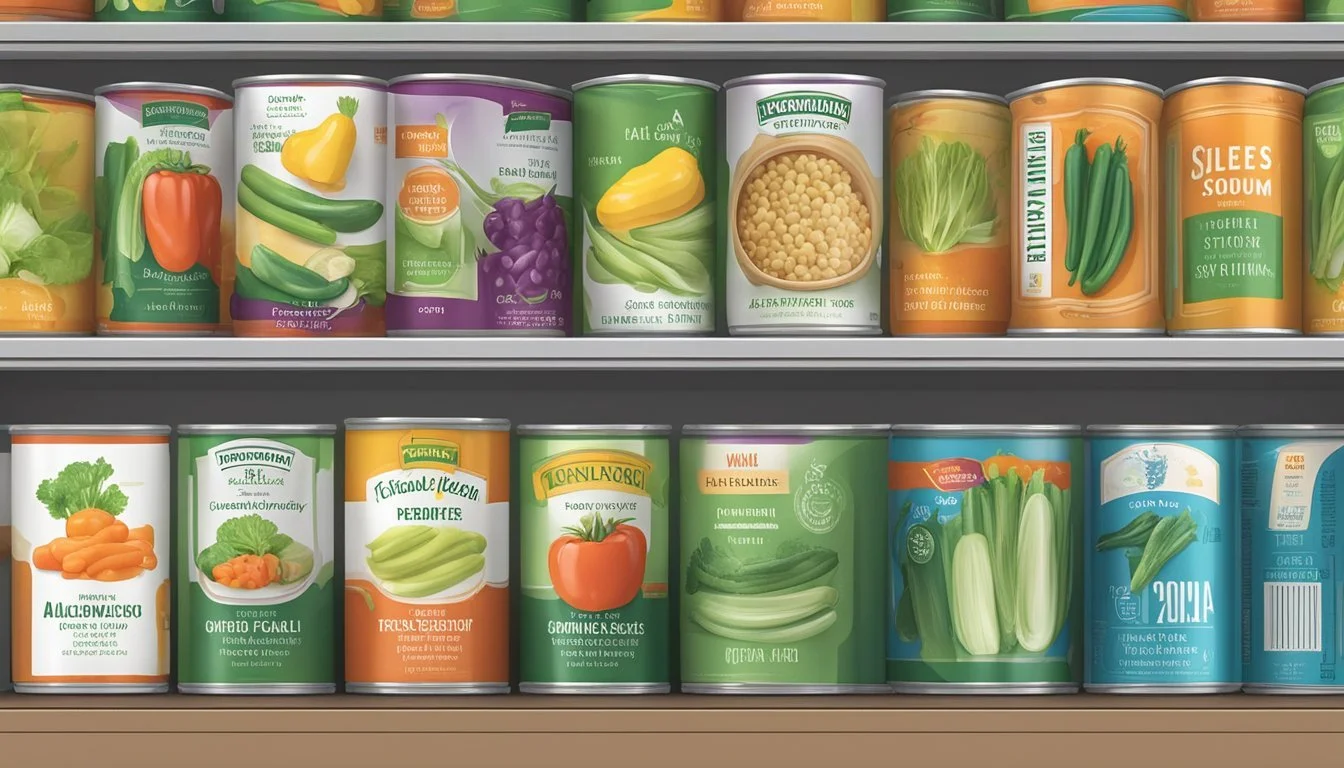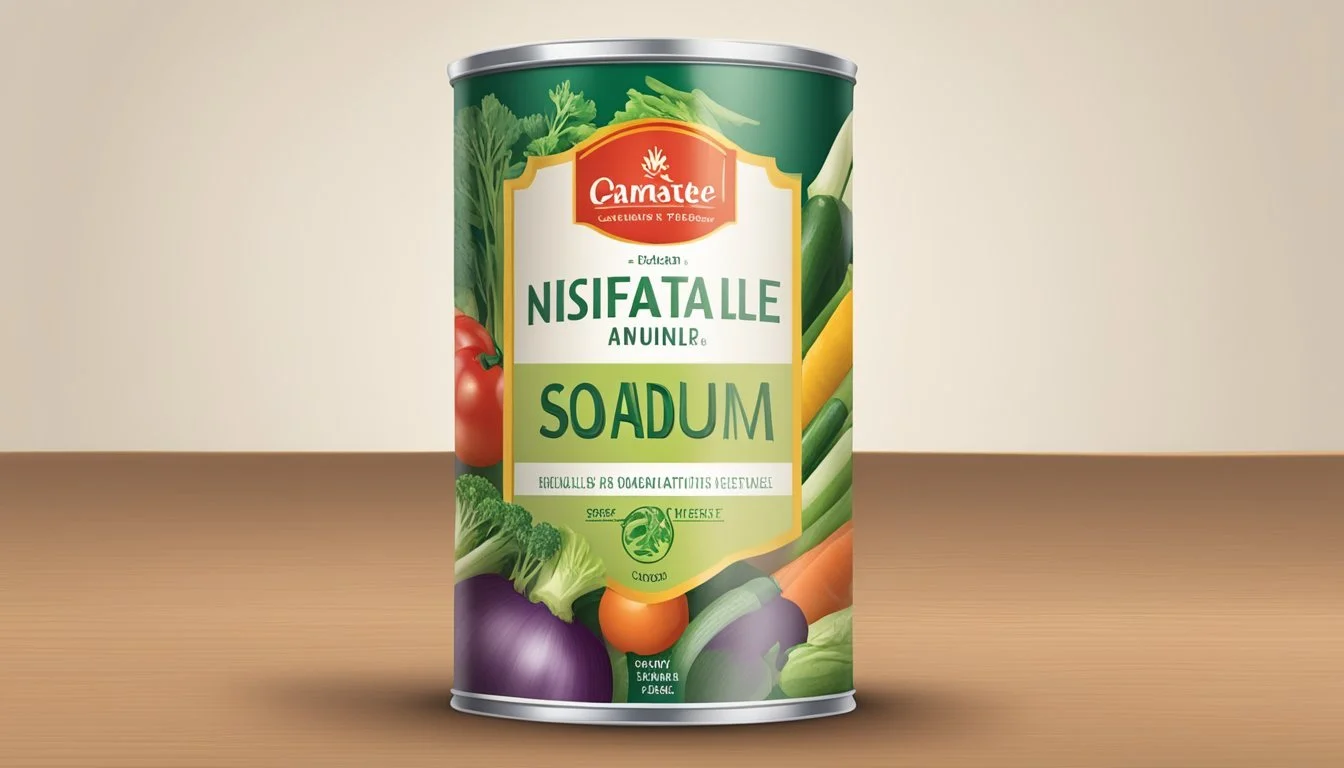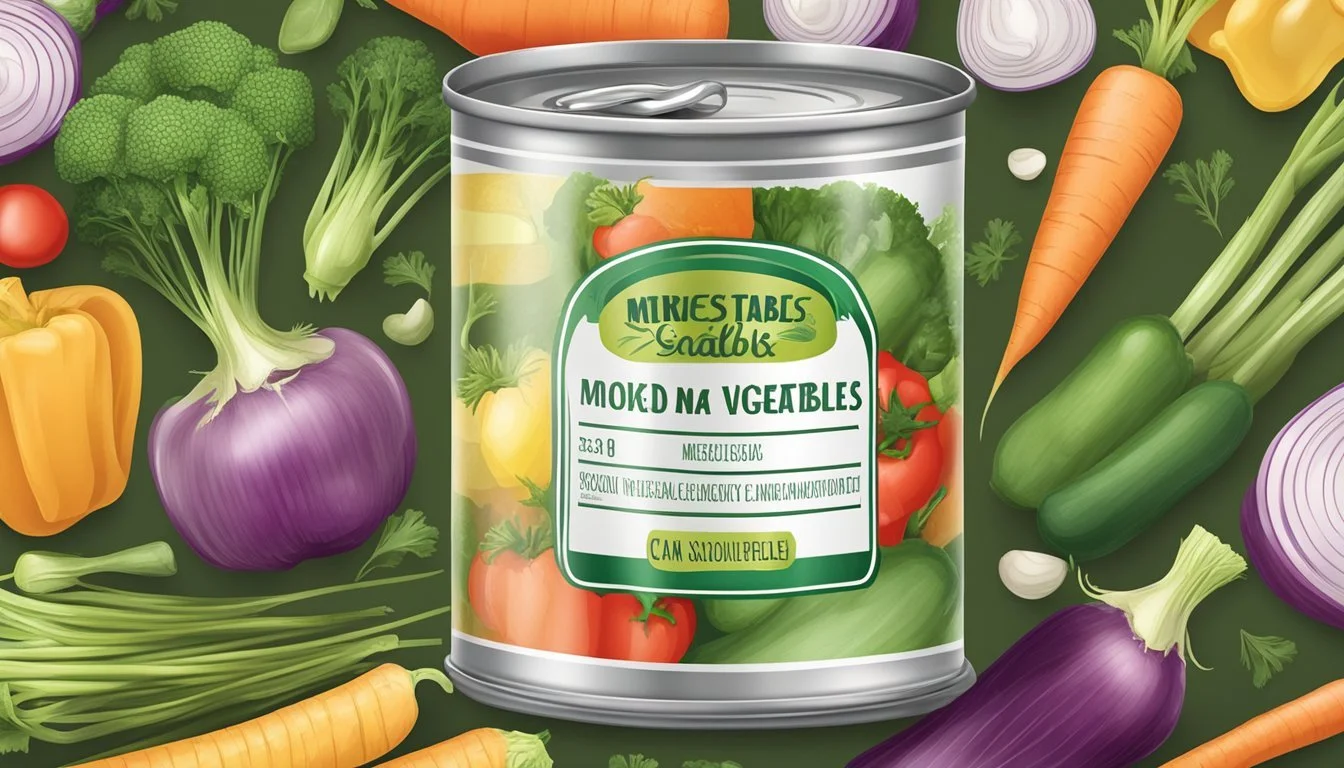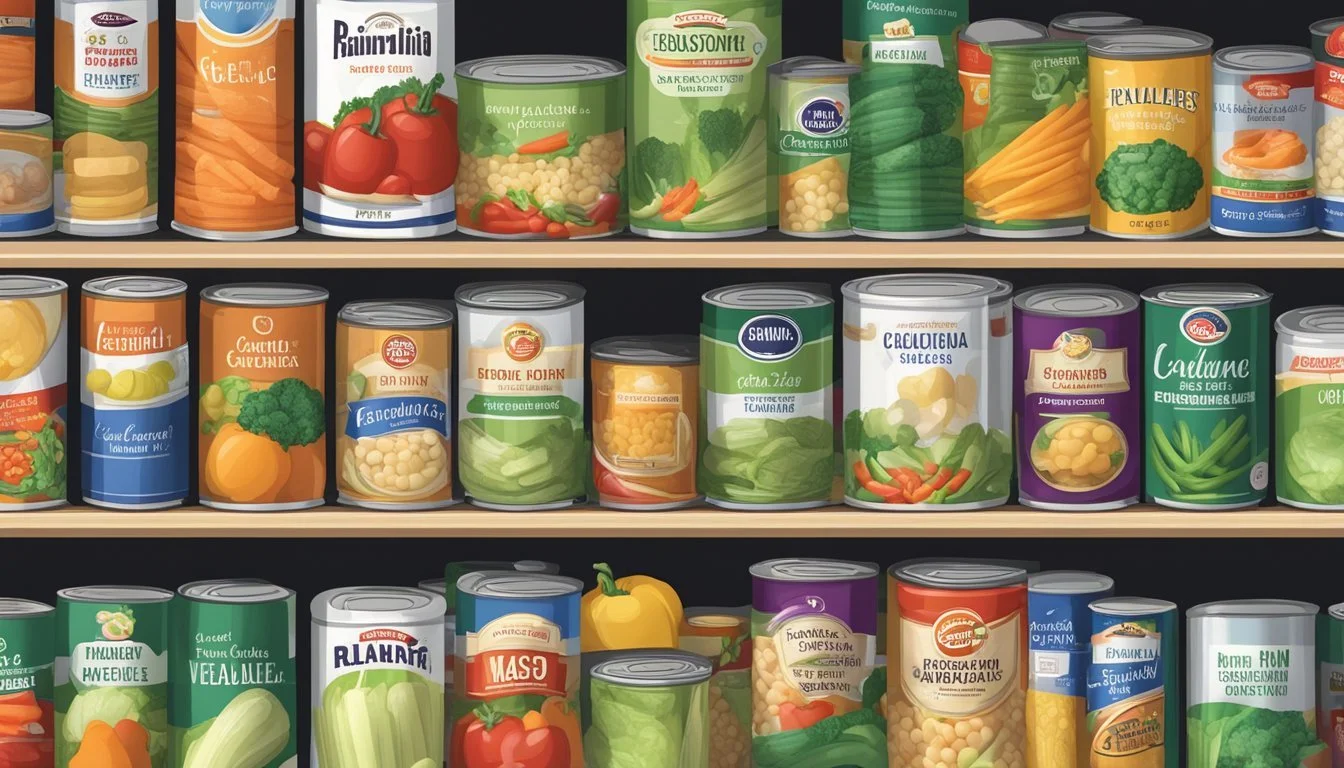Can Diabetics Eat Canned Mixed Vegetables with Added Sodium?
Understanding Dietary Choices for Diabetes
Managing diabetes can often feel like navigating a complex maze of dietary restrictions and guidelines. One frequent question among those with diabetes is whether canned mixed vegetables with added sodium are advisable. For individuals with diabetes, eating canned mixed vegetables that contain added sodium is generally not recommended.
Excessive sodium intake can lead to increased blood pressure and other cardiovascular issues, which are particularly concerning for those managing diabetes. Opting for plain, no-salt-added canned vegetables or thoroughly rinsing regular canned vegetables can significantly reduce sodium content. This simple step can help make canned vegetables a healthier option for those looking to maintain better blood sugar and overall health.
Including vegetables in a diabetic diet is essential, but the method of preparation and preservation matters. Fresh vegetables are ideal, but when choosing canned options, vigilance regarding sodium content is crucial. Selecting low-sodium or no-salt-added versions and rinsing canned vegetables can help individuals with diabetes enjoy the convenience of canned foods without the added health risks associated with high sodium intake.
Understanding Diabetes and Nutrition
Individuals with diabetes must pay careful attention to their diet to manage blood sugar levels effectively. Several factors, including the nutritional content of foods like canned vegetables, play a crucial role in diabetes management.
Role of Diet in Diabetes Management
Diet is central to diabetes management. It helps regulate blood glucose levels and supports overall health. For those with diabetes, the types of carbohydrates consumed can significantly impact blood sugar levels. It's essential to choose foods that have a low glycemic index, meaning they don't cause a rapid spike in blood sugar.
Protein and fiber are also critical components. They slow digestion and help maintain steady blood sugar levels. Foods rich in vitamins and minerals support overall well-being and can mitigate some complications associated with diabetes. Monitoring calorie intake is also vital for weight management, which can affect insulin sensitivity.
Nutritional Profile of Canned Vegetables
Canned vegetables can be part of a diabetic diet but should be chosen carefully. Many canned vegetables contain added sodium, which can affect blood pressure and overall health. Choosing "No Salt Added" versions and rinsing canned vegetables can help reduce sodium content by up to 40%.
Canned vegetables still retain essential nutrients such as vitamins, minerals, and fiber. They are convenient and often more affordable compared to fresh alternatives. Including a variety of these vegetables in the diet ensures a sufficient intake of essential nutrients without excessive calories, supporting blood glucose management and overall health.
Sodium Content in Canned Vegetables
Sodium levels in canned vegetables are a significant consideration, especially for those managing conditions like diabetes. Understanding the health impact, comparison to fresh vegetables, available low-sodium options, and the importance of reading labels can help make healthier choices.
Impact of Sodium on Health
High sodium intake can lead to increased blood pressure, which in turn can elevate the risk of heart disease. For those with diabetes, managing blood pressure is especially critical to avoid complications. Canned vegetables often contain added sodium as a preservative which can contribute to these health risks. Reducing sodium intake can support heart health and overall well-being.
Comparing Sodium Levels: Canned vs. Fresh Vegetables
Fresh vegetables generally contain minimal natural sodium compared to their canned counterparts. Canned vegetables may have added salt for flavor and preservation, resulting in significantly higher sodium levels. For example, a serving of canned green beans can contain up to 300-400 mg of sodium, whereas fresh green beans have around 6 mg. Choosing fresh vegetables or rinsing canned options can reduce sodium intake.
Low-Sodium Options and Alternatives
Opting for low-sodium or no salt added canned vegetables is a beneficial alternative. Brands often label these options clearly, making it easier to identify healthier choices. Other alternatives include using frozen vegetables, which typically have less added sodium compared to canned versions. Pairing these with fresh fruits and other sodium-free ingredients can help achieve a balanced diet.
Reading Labels for Sodium Content
Examining nutrition labels is crucial when choosing canned vegetables. Look for products labeled as "low-sodium" or "no salt added". The Nutrition Facts panel will list the sodium content per serving, helping to compare different products effectively. It's also useful to note the serving size, as consuming multiple servings can quickly increase sodium intake. Reading labels can make a significant difference in managing dietary sodium.
Incorporating Canned Vegetables into a Diabetic Diet
Incorporating canned vegetables into a diabetic diet can be beneficial when attention is paid to sodium levels, and proper meal planning ensures balanced nutrition. Here are key strategies for including canned vegetables in your diet while managing diabetes effectively.
Creating a Balanced Meal Plan
Creating a balanced meal plan helps maintain blood sugar levels. Incorporate non-starchy vegetables like spinach, green beans, and bell peppers as they are low in carbohydrates and rich in fiber. Pairing these with lean proteins and healthy fats can aid in achieving a balanced diet.
To mitigate high sodium content, rinse canned vegetables before use. This can significantly decrease sodium levels. Portion control also plays a critical role. Monitor carbohydrate intake from canned vegetables and other sources to maintain optimal blood sugar levels throughout the day.
Vegetables to Choose and Avoid
Choosing the right vegetables is crucial. Opt for non-starchy vegetables such as leafy greens, cucumbers, and asparagus, which are low in carbohydrates. Avoid starchy vegetables like potatoes, corn, and peas, which can spike blood sugar levels.
When selecting canned vegetables, look for labels that indicate "no salt added" or "low sodium". Additionally, check for added sugars, which should be avoided. Canned versions of spinach, tomatoes, and artichokes are good options for a diabetes-friendly diet.
Suitable Canned Vegetable Recipes
Incorporating canned vegetables in recipes can be convenient and nutritious. Consider adding rinsed canned beans to soups and salads for added fiber and protein. A simple recipe could involve making a three-bean salad with a mix of canned beans, chopped vegetables, and a light vinaigrette.
Canned vegetables can also be included in casseroles. For example, a diabetic-friendly tuna casserole can be prepared using canned tuna, canned green beans, and a whole grain pasta, all tossed in a low-fat, low-sodium sauce. This creates a hearty meal that supports blood sugar management.
Ensuring these practices can make canned vegetables a healthy addition to a diabetic diet, providing convenience without compromising nutritional quality.
Additional Considerations for Diabetics
When selecting canned mixed vegetables with added sodium, diabetics should be mindful of several factors such as fiber content, carbohydrate intake, heart-health, and professional medical advice. These elements play a crucial role in managing diabetes effectively.
The Role of Fiber in Blood Sugar Control
Fiber is essential for regulating blood sugar levels. Non-starchy vegetables like carrots, green beans, and cauliflower are high in fiber and can stabilize blood sugar. High-fiber diets can delay the absorption of glucose into the bloodstream, reducing blood sugar spikes. Thus, choosing canned mixed vegetables with high fiber content is beneficial for diabetics. Consuming a variety of vegetables ensures a balanced fiber intake.
Monitoring Carbohydrate Intake
Carbohydrate management is pivotal for diabetics. Starchy vegetables like potatoes and corn contain more carbohydrates, impacting blood sugar levels. Diabetics should select canned vegetables with less starchy content and fewer added sugars. Reading nutritional labels on canned vegetables helps in determining the carbohydrate content, enabling better blood sugar management. Balance is key; pairing high-fiber vegetables with protein can further aid in blood sugar control.
Choosing Heart-Healthy Options
Heart-health is a significant concern for diabetics. Opt for canned vegetables without added saturated fats or sodium. Excess sodium can lead to high blood pressure, a risk factor for heart disease. Look for options labeled “no added salt” or “low sodium”. Incorporating canned vegetables with heart-healthy omega-3 fatty acids, found in leafy greens, can also support cardiovascular health.
Consulting with Healthcare Professionals
Engaging with healthcare professionals ensures personalized dietary plans. Registered dietitians and diabetes educators can provide tailored advice on managing diabetes. They can help diabetics make informed choices about canned vegetables and other foods. Regular consultations help in monitoring the effectiveness of dietary changes and maintaining blood sugar levels within target ranges. It is essential to continuously update the diet plan based on medical feedback and blood sugar monitoring results.
Label Reading and Nutrient Analysis
When choosing canned mixed vegetables, it's crucial to understand the nutrition label.
Sodium is often added to canned vegetables as a preservative. Check the label for "no salt added" options. The American Diabetes Association recommends keeping sodium intake below 2300 mg per day.
Fiber helps manage blood sugar. Non-starchy vegetables typically have higher fiber, which is beneficial. Look for at least 2-3 grams of fiber per serving.
Look at the % Daily Value (%DV) on the label:
5% DV or less of sodium, sugar, or fat means it's low.
20% DV or more of these nutrients means it's high.
Be aware of sugar content, which can sometimes be high in canned vegetables with added sauces or seasonings. Opt for varieties without added sugar.
For fat, avoid those with added creamy or buttery sauces. These can significantly increase fat intake. Choose plain options and flavor them yourself with herbs and spices.
Label Summary:
Sodium: Aim for 5% DV or less.
Fiber: Look for 2-3 grams per serving.
Sugar: Minimal or no added sugars.
Fat: Minimal, avoid added sauces.
By paying attention to these components, diabetics can make better choices and manage their health effectively.
Alternatives to Canned Vegetables
Individuals with diabetes can explore fresh and frozen produce, as well as using herbs and spices to enhance flavor while maintaining health benefits. These options provide a nutritious and often more flavorful alternative to canned vegetables with added sodium.
Benefits of Fresh and Frozen Produce
Fresh produce offers the highest levels of vitamins and minerals, making it a valuable option. Vegetables like spinach, broccoli, and bell peppers are rich in fiber and antioxidants, which help manage blood sugar levels.
Frozen vegetables are another excellent choice. They are typically flash-frozen at peak ripeness, preserving their nutritional content. Options such as frozen peas, green beans, and carrots can be readily available and convenient. These alternatives usually contain no added sodium, unlike many canned versions.
Incorporating fresh and frozen vegetables into meals can diversify a diabetes-friendly diet. For example, fresh spinach can be added to salads, while frozen broccoli can be easily steamed for a quick side dish. Choosing these alternatives helps avoid the excess sodium often found in canned vegetables.
Using Herbs and Spices for Flavoring
To enhance the flavor of fresh and frozen vegetables, consider using herbs and spices. These natural flavorings add depth without increasing sodium content. Common herbs like basil, rosemary, and parsley can complement various dishes with distinct tastes.
Spices such as garlic powder, black pepper, and paprika offer bold flavors that can make vegetables more appealing. Garlic and pepper can be particularly beneficial for adding zest without extra calories or sodium.
Herbs and spices also have potential health benefits. Garlic has properties that may improve heart health, while black pepper can aid digestion. These seasonings provide a flavorful, health-conscious way to enjoy a variety of fresh and frozen vegetables in a diabetes-friendly diet.
Conclusion
Diabetics can consume canned mixed vegetables with added sodium, but they must do so thoughtfully.
Rinsing and draining these vegetables can significantly reduce their sodium content by up to 40%. This simple step can make them a healthier option for those managing diabetes and watching their sodium intake.
Canned mixed vegetables offer convenience and nutritional value. They maintain essential vitamins and fiber, which are beneficial for overall health. However, it's crucial for diabetics to monitor sodium intake since high sodium can affect blood pressure and overall cardiovascular health.
When choosing canned vegetables, opting for varieties labeled as "No Salt Added" or "Low Sodium" can make a substantial difference. Comparing labels can help in making better choices to align with a diabetes-friendly diet.
Including a variety of non-starchy vegetables in a diabetic diet is important. These vegetables are low in carbohydrates and high in essential nutrients, supporting blood sugar management and overall health. Always seasoning with herbs and spices instead of salt adds flavor without increasing sodium intake.
Incorporating canned vegetables into meals can be done healthily by taking these measures. This allows diabetics to enjoy the convenience of canned foods without compromising their dietary needs.






